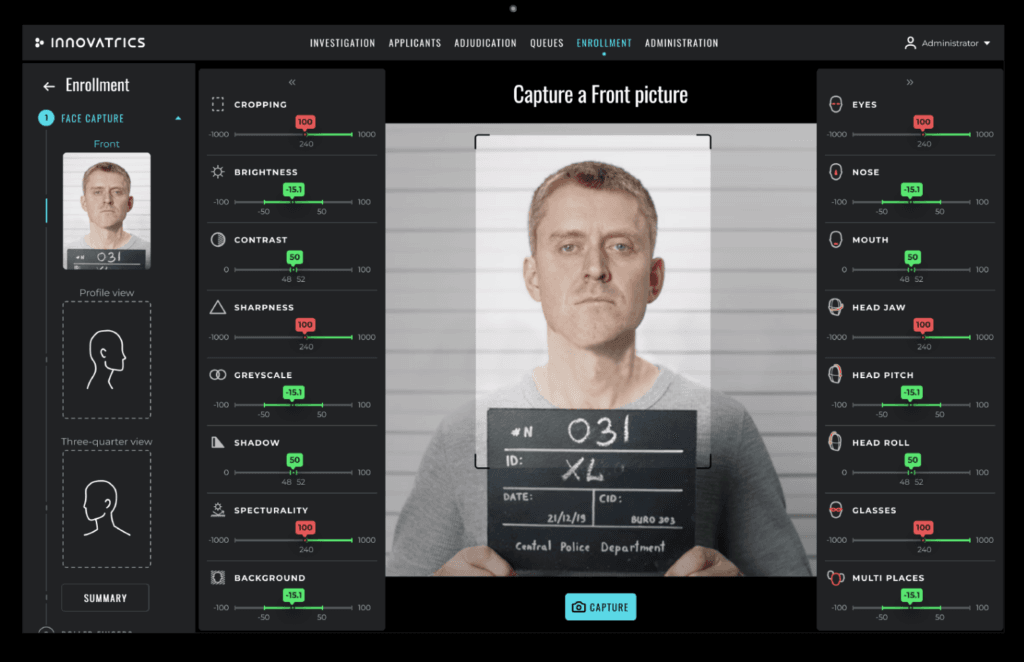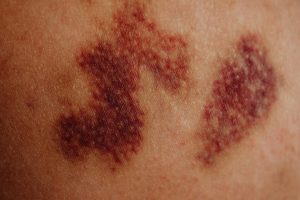
Seamless Integration: Implementing Remote Identity Verification Systems Effectively
This is a part of the series about remote identity verification solutions and how to successfully integrate them ...
Read moreBiometric identification is a crucial tool in modern law enforcement. Automated Biometric Identification Systems (ABIS) have transformed criminal investigations by providing fast and accurate biometric identification. While fingerprints and facial recognition remain the most commonly used biometric identifiers, additional traits—often referred to as soft biometrics—enhance the accuracy and reliability of identification efforts.

Soft biometrics include characteristics like height, weight, gait, and distinguishing physical features such as scars, marks, and tattoos (SMT). Unlike primary biometric traits, soft biometrics do not provide unique identification on their own but serve as valuable supplemental data points. SMT, in particular, offer long-term stability and uniqueness, making them highly effective in criminal investigations. Their integration into biometric databases in criminal ABIS strengthens law enforcement’s ability to track suspects, solve cases, and enhance forensic analysis.
This article explores the role of SMT in criminal ABIS, detailing how law enforcement agencies capture, store, and analyze these identifiers to improve public safety.
Scars, marks, and tattoos (SMT) are distinguishing physical characteristics that play a critical role in criminal investigations. Unlike facial features or fingerprints, these identifiers often provide unique details about an individual, making them valuable in forensic and biometric investigations.
Scars form as a result of injuries, surgical procedures, or medical conditions. They vary in size, shape, and location, making them useful identifiers. Unlike facial features, scars do not change significantly over time, which makes them reliable for long-term identification.

Marks include birthmarks, skin discolorations, moles, or other natural skin characteristics. These features are unique to individuals and often appear in the same location throughout life.

Tattoos are intentional body modifications that serve cultural, personal, or symbolic purposes. They can be highly detailed, making them useful for criminal identification. Law enforcement agencies regularly document tattoos, as they often provide insight into gang affiliations, criminal histories, or personal identities.

SMT are among the most stable soft biometric identifiers used in criminal ABIS. Unlike facial features, which can change due to aging, weight fluctuations, or cosmetic procedures, scars, marks and tattoos remain relatively unchanged. This makes them valuable in long-term investigations and the identification of missing persons or unidentified remains.
Many criminals attempt to alter their fingerprints or wear disguises to avoid detection. However, removing scars or tattoos often leaves additional identifying marks, making them difficult to erase completely. Law enforcement agencies use SMT to:
Criminals often operate across multiple regions. A suspect arrested in one jurisdiction may have a criminal record elsewhere. Criminals may also attempt to alter or obscure biometric traits such as fingerprints, but removing a distinct tattoo or scar is difficult and often leaves additional identifying marks. By including SMT in biometric databases, law enforcement agencies can link cases and identify individuals across different locations when accessing criminal ABIS.
Scars, marks, and tattoos have been instrumental in solving crimes, identifying suspects, and linking cases across jurisdictions. Their permanence and uniqueness make them valuable tools in law enforcement investigations, particularly when other biometric data is unavailable or altered. By leveraging SMT data within ABIS, agencies can enhance their ability to track individuals, connect criminal activities, and close longstanding cases. Below are key areas where SMT identification plays a crucial role.
Tattoos often indicate gang membership. By analyzing tattoo patterns, law enforcement can track criminal networks and predict potential threats.
Investigators use SMT data to reopen and solve cold cases. Matching an unidentified victim’s tattoos to an existing ABIS record can provide crucial leads.
Interpol and other agencies use biometric identification to track fugitives across borders. SMT data enhances these efforts by providing additional identifiers beyond fingerprints and facial recognition.

Automated Biometric Identification Systems (ABIS) have revolutionized the way law enforcement agencies process and analyze biometric data. By incorporating soft biometrics such as scars, marks, and tattoos into these systems, criminal ABIS can provide a more comprehensive approach to identification.
Automated Biometric Identification Systems (ABIS) are designed to store and retrieve biometric data efficiently. Traditionally, ABIS databases have focused on fingerprints, facial recognition, and iris scans. However, the integration of SMT data significantly enhances identification accuracy.
Law enforcement agencies capture SMT data through high-resolution images and detailed descriptions. These records are stored in national and international biometric databases, enabling cross-jurisdictional identification. Some systems also incorporate metadata, such as tattoo descriptions, suspected gang affiliations, or known aliases, to enhance search capabilities.
Advanced image processing and pattern recognition algorithms play a crucial role in biometric identification. Law enforcement agencies use software capable of analyzing tattoo patterns, recognizing unique scar formations, and categorizing birthmarks.
These systems apply artificial intelligence (AI) to:
While automated systems have greatly enhanced the speed and accuracy of biometric identification, human expertise remains essential. Trained forensic experts are often required to confirm matches or resolve ambiguities that automated systems may miss. For instance, a tattoo that has faded or been modified over time may require manual analysis to ensure accurate identification.
The combination of advanced technology and human oversight ensures that the identification process is both efficient and reliable. This collaborative approach maximizes the strengths of both systems, providing law enforcement with the best possible tools for solving crimes.
Forensic examiners work alongside AI-powered systems to:
Despite their many advantages, the use of scars, marks, and tattoos in biometric identification is not without challenges. Tattoo designs can change over time due to fading, cover-ups, or modifications, which can complicate the matching process. Poor image quality or incomplete documentation can also lead to inaccuracies in matching.
Criminals may attempt to obscure or alter their tattoos to avoid recognition. Common strategies include:
Additionally, the diversity of cultural and linguistic tattoo patterns presents a unique challenge for criminal ABIS systems. Certain tattoo symbols carry different meanings across regions. For example, a symbol associated with one gang in the U.S. may have a different significance in another country. AI must be trained to recognize and interpret these cultural differences.
AI-driven recognition software must be continually updated to handle these variations and ensure accurate identification across different populations. Ongoing improvements in image processing and pattern recognition are essential to address these limitations and enhance the overall effectiveness of soft biometrics like SMT in criminal investigations.
Addressing these challenges requires ongoing improvements in AI-driven recognition systems and collaboration between law enforcement agencies.
The future of biometric identification relies on continuous advancements in AI, machine learning, and database integration. Key developments include:
Law enforcement agencies that invest in cutting-edge biometric solutions, including SMT recognition, will improve their ability to identify and apprehend criminals efficiently.
The integration of scars, marks, and tattoos into biometric identification systems represents a significant advancement in law enforcement technology. By leveraging these unique identifiers, criminal ABIS systems can provide a more comprehensive and accurate approach to criminal identification. The combination of automated systems and human expertise ensures that law enforcement agencies have the tools they need to solve crimes efficiently and effectively.
As technology continues to evolve, the role of SMT in criminal ABIS will only grow in importance. By addressing current challenges and investing in ongoing improvements, law enforcement agencies can stay ahead of criminals and create a safer society. The future of biometric identification lies in the seamless integration of all available data, and SMT will undoubtedly play a key role in this evolution.
Deploying Criminal ABIS solutions that incorporate scars, marks, and tattoos is not just a technological upgrade—it’s a strategic move toward more effective crime-solving and public safety.